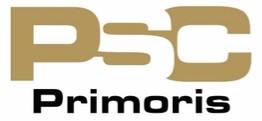
May 9, 2024
Office of Real Estate and Construction
Division of Corporation Finance
United States Securities and Exchange Commission
100 F Street, NE
Washington, D.C. 20549-4631
Re:Letter dated April 26, 2024
Primoris Services Corporation
Form 10-K for the fiscal year ended December 31, 2023
Filed on February 27, 2024
File No. 001-34145
This letter responds to your letter to Primoris Services Corporation (“we”, “us”, or the “Company”), dated September April 26, 2024. For your convenience, your comments are shown below in italics, followed by our response to each comment. Our responses correspond to the numbers placed adjacent to the comments in your letter.
Capitalized terms not otherwise defined in this document have the same meanings as given to them in our Form 10-K filing for the fiscal year ended December 31, 2023.
Form 10-K for the Year Ended December 31, 2023
Note 2 – Summary of Significant Accounting Policies, page F-12
| 1. | We note your disclosure that in June 2023, you entered into an Accounts Receivable Securitization Facility with PNC Bank, National Association that you account for the accounts receivable sold to the banking counterparty as a sale of financial assets and derecognize the trade accounts receivable from your Consolidated Balance Sheets. We further note that you have no continuing involvement in the transferred accounts receivable, other than collection and administrative responsibilities. Given the Company’s continued collection and administrative responsibilities, please further clarify whether the Company determined whether it had any servicing obligation that would result in the Company having to recognize a servicing asset or liability. Refer to ASC 860-10-25-1. |
Management’s Response
In the second quarter of 2023, the Company entered into an Accounts Receivable Securitization Facility (the “Facility”) with PNC Bank, National Association (“PNC”) to improve cash flows from trade accounts receivable. The Facility has a one-year term, and the maximum purchase commitment by PNC is $100.0 million, at any one time.
Under the Facility, certain of the Company’s designated subsidiaries may sell their trade accounts receivable as they are originated to a wholly owned bankruptcy remote Special Purpose Entity (“SPE”) created specifically for this purpose. The Company controls and, therefore, consolidates the SPE in its consolidated financial statements. The SPE transfers ownership and control of qualifying accounts receivable to PNC up to the maximum purchase commitment. The Company and its related subsidiaries have no continuing involvement in the transferred accounts receivable, other than collection and administrative responsibilities, and, once sold, the accounts receivable are no longer available to satisfy the Company’s creditors or those of its related subsidiaries. The Facility did not provide for explicit compensation to the Company for servicing the sold accounts receivable.
1